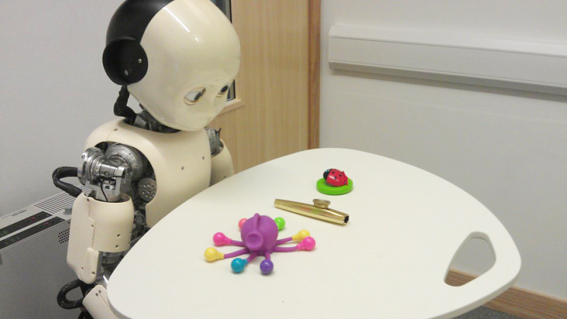LONDON : Scientists have created a toddler robot which helped discover that young children learn new words using the same method as machines.
This suggests that early learning is based not on conscious thought but on an automatic ability to associate objects which enables babies to quickly make sense of their environment, researchers said.
Researchers from Sussex University and Lancaster University in the UK wanted to find out how young children learn new words for the first time.
They programmed a humanoid robot called iCub designed to have similar proportions to a three year old child, using simple software which enabled the robot to hear words through a microphone and see with a camera.
It was trained to point at new objects to identify them in order to solve the mystery of how young children learn new words.
“We know that two-year-old children can work out the meaning of a new word based on words they already know,” said Katie Twomey from Lancaster University.
“That is, our toddler can work out that the new word ‘giraffe’ refers to a new toy, when they can also see two others, called ‘duck’ and ‘rabbit’,” Twomey said.
It is thought that toddlers achieve this through a strategy known as ‘mutual exclusivity’ where they use a process of elimination to work out that because the brown toy is called ‘rabbit’, and the yellow toy is called ‘duck’, then the orange toy must be ‘giraffe’.
Researchers found that the robot learned in exactly the same way when shown several familiar toys and one brand new toy.
“This new study shows that mutual exclusivity behaviour can be achieved with a very simple “brain” that just learns associations between words and objects,” said Twomey.
“This suggests that at least some aspects of early learning are based on an astonishingly powerful association making ability which allows babies and toddlers to rapidly absorb information from the very complicated learning environment,” he said. (AGENCIES)


